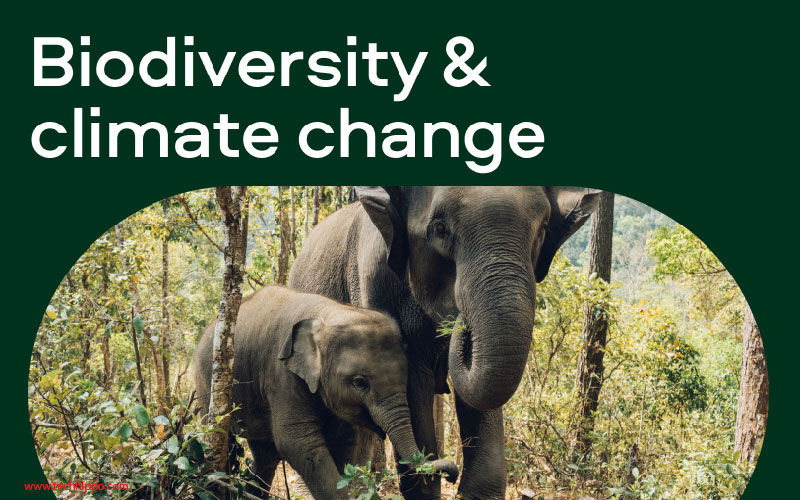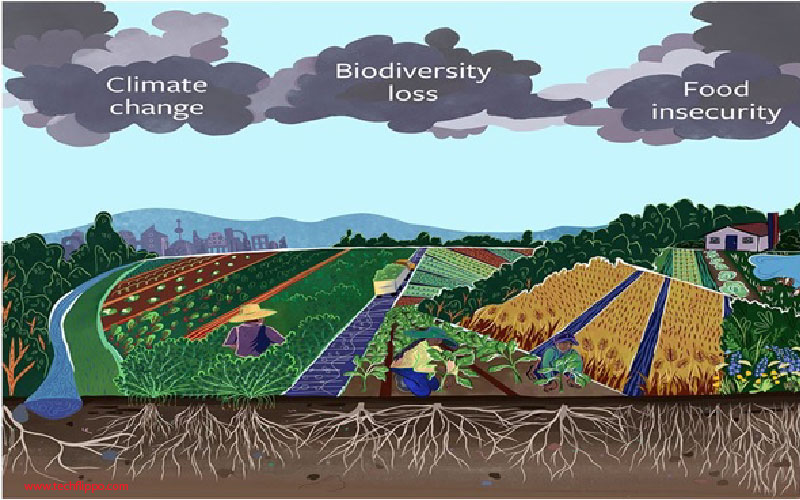The Impact of Global Warming on Biodiversity
We will discuss the impact of Global Warming on Biodiversity in detail. Global warming is not just a distant threat; it’s a pressing reality that affects every aspect of our planet. One area that is particularly vulnerable to these rising temperatures is biodiversity. Our world teems with life, from the smallest microbes in the soil to majestic elephants roaming the savannahs. Yet, as climate change accelerates, many species face unprecedented challenges.
The delicate balance that sustains ecosystems hangs by a thread as habitats shrink and conditions shift. Understanding how global warming impacts biodiversity isn’t just an academic exercise—it’s crucial for our survival and the health of our planet. Join us as we explore this critical topic and uncover why protecting biodiversity matters now more than ever!

How Global Warming Affects Biodiversity
Global warming significantly disrupts ecosystems. As temperatures rise, many species struggle to adapt quickly enough. This leads to shifts in migration patterns and breeding seasons.
Coral reefs are particularly vulnerable. Increased ocean temperatures cause coral bleaching, which devastates marine biodiversity. Fish and other sea creatures that depend on healthy reefs face dire consequences.
On land, altered weather patterns affect plant growth cycles. Some plants may flourish in warmer conditions, while others may decline or perish entirely. This change impacts the animals that rely on these plants for food and shelter.
Additionally, invasive species thrive in warmer climates, outcompeting native flora and fauna. The balance of entire ecosystems hangs by a thread as global warming reshapes habitats across the planet.
These alterations ripple through food chains, highlighting the interconnectedness of life on Earth. Every tiny shift can lead to significant changes in biodiversity over time.
Loss of Habitats and Species Extinction
The loss of habitats due to global warming is a pressing issue. As temperatures rise, ecosystems struggle to adapt. Forests, wetlands, and coral reefs are particularly vulnerable.
Species that depend on these environments face dire consequences. Many animals find their homes disappearing or changing beyond recognition. This drives some species toward extinction.
For instance, polar bears rely on sea ice for hunting seals. As ice melts, their ability to feed diminishes. Similar patterns emerge in various ecosystems worldwide.
In addition to temperature changes, shifting weather patterns disrupt migration routes and breeding cycles. Birds may arrive too early or too late for essential food sources.
This imbalance leads not only to individual species decline but also threatens entire ecosystems’ stability. The intricate web of life hangs in the balance as we witness more extinctions linked directly to habitat loss from global warming’s effects.
Changes in Ecosystems and Food Chains
Global warming disrupts the delicate balance of ecosystems. As temperatures rise, many species are forced to adapt quickly or face extinction. This shift can lead to unexpected consequences within food chains.
For instance, when a key predator disappears due to habitat loss or changing climates, prey populations may explode. This sudden increase can overwhelm vegetation and destabilize entire ecosystems. The ripple effects are felt far and wide.
Additionally, warmer waters affect marine life significantly. Coral reefs suffer from bleaching events, leading to a decline in fish habitats that rely on these vibrant structures for survival.
Changes in plant growth patterns also influence herbivores and the predators that follow them. Each alteration creates a domino effect throughout the ecosystem, highlighting how interconnected all life forms truly are.
The fragility of these relationships underscores the urgency of addressing global warming’s impact on biodiversity now more than ever.

The Role of Human Activities in Global Warming
Human activities play a crucial role in driving global warming. The burning of fossil fuels for energy is one of the largest contributors. Cars, factories, and power plants release significant amounts of carbon dioxide into the atmosphere.
Deforestation also exacerbates the problem. Trees absorb carbon dioxide; when they’re cut down, that stored carbon is released back into the air. This loss not only increases greenhouse gases but also reduces biodiversity by destroying habitats.
Agricultural practices contribute as well. Livestock farming emits methane, a potent greenhouse gas. Plus, fertilizer use can lead to nitrous oxide emissions.
Urbanization further complicates matters. Expanding cities replace natural landscapes with concrete and asphalt, increasing heat absorption and altering local climates.
Through these actions, we are reshaping our planet’s climate system at an alarming rate. It’s essential to recognize how intertwined our behaviors are with environmental health and biodiversity preservation.
Efforts to Combat Global Warming and Protect Biodiversity
Around the globe, various efforts are underway to combat global warming and safeguard biodiversity. Governments, organizations, and communities are increasingly recognizing the urgency of this dual crisis.
One major initiative is reforestation. Planting trees not only absorbs CO2 but also restores habitats for countless species. Urban greening projects aim to enhance biodiversity in cities by creating green spaces that support wildlife.
Sustainable agriculture practices are gaining traction as well. By promoting crop diversity and reducing chemical inputs, farmers can cultivate healthier ecosystems while still feeding populations.
Additionally, international agreements like the Paris Accord emphasize collaboration among nations. These pacts set targets for emissions reductions and promote conservation initiatives worldwide.
Education plays a crucial role too. Raising awareness about climate change’s effects on local ecosystems inspires action at community levels—people become stewards of their environment when they understand its value.
Conclusion: The Need for Immediate Action to Preserve Biodiversity
The effects of global warming on biodiversity are profound and far-reaching. Species are facing unprecedented challenges as their habitats change, often leading to extinction. The intricate balance of ecosystems is disrupted, affecting food chains and the overall health of our planet.
Human activities have played a significant role in accelerating these changes. From greenhouse gas emissions to deforestation, our actions contribute directly to the warming climate. It’s crucial for us to acknowledge this impact and take responsibility.
Many efforts are underway worldwide to combat global warming and protect biodiversity. Conservation initiatives aim to restore habitats while promoting sustainable practices that benefit both nature and communities.
However, immediate action is essential if we hope to preserve the rich tapestry of life on Earth. Urgent measures must be taken not only at governmental levels but also within local communities and individual behaviors. Every small action counts when it comes to protecting our planet’s future and its incredible diversity of life. Now is the time for everyone—individuals, organizations, governments—to rally together in this fight against global warming on biodiversity before it’s too late.